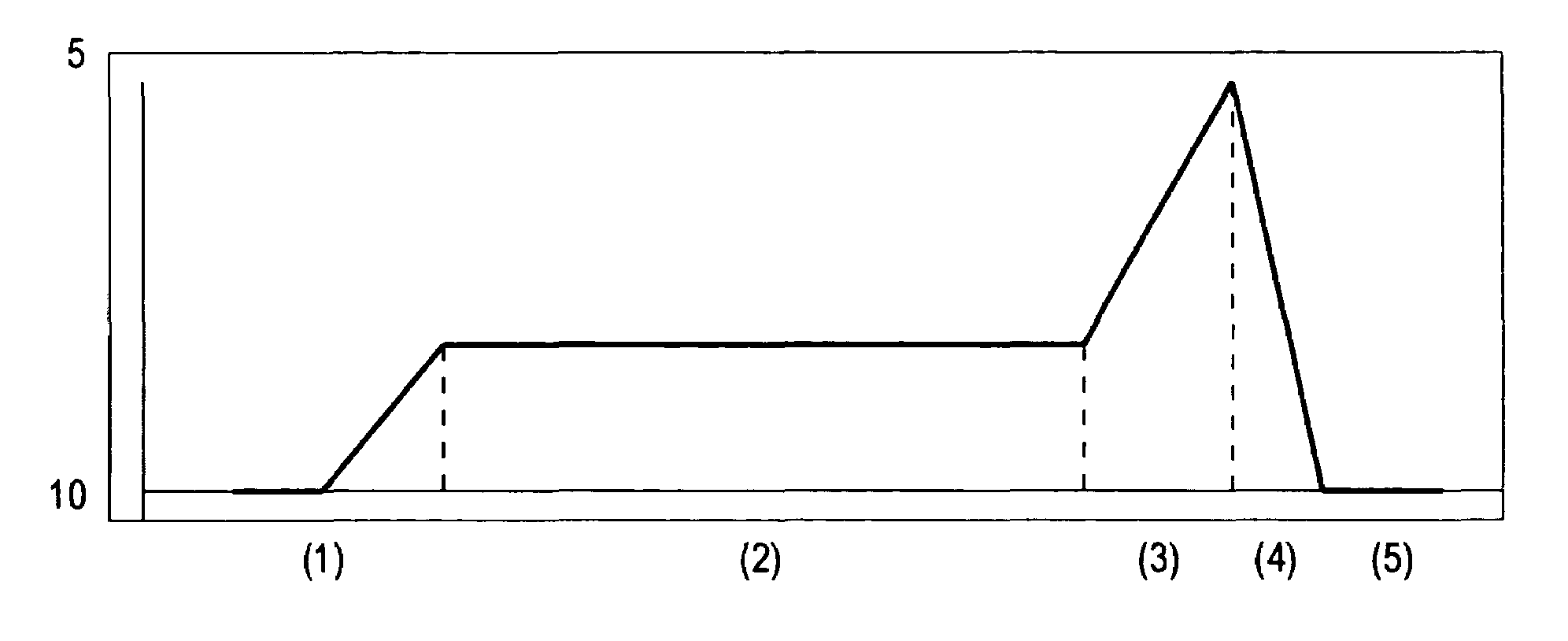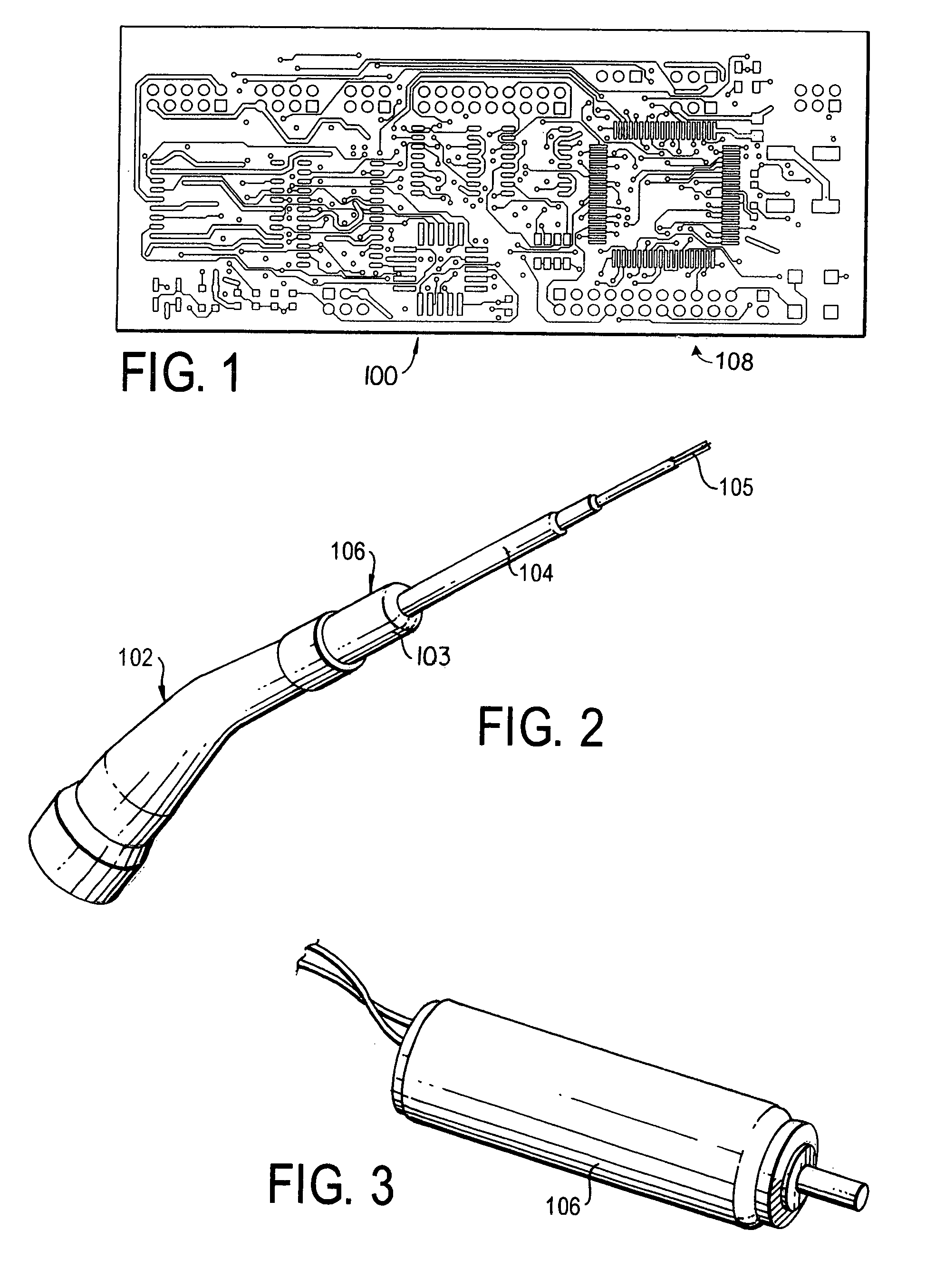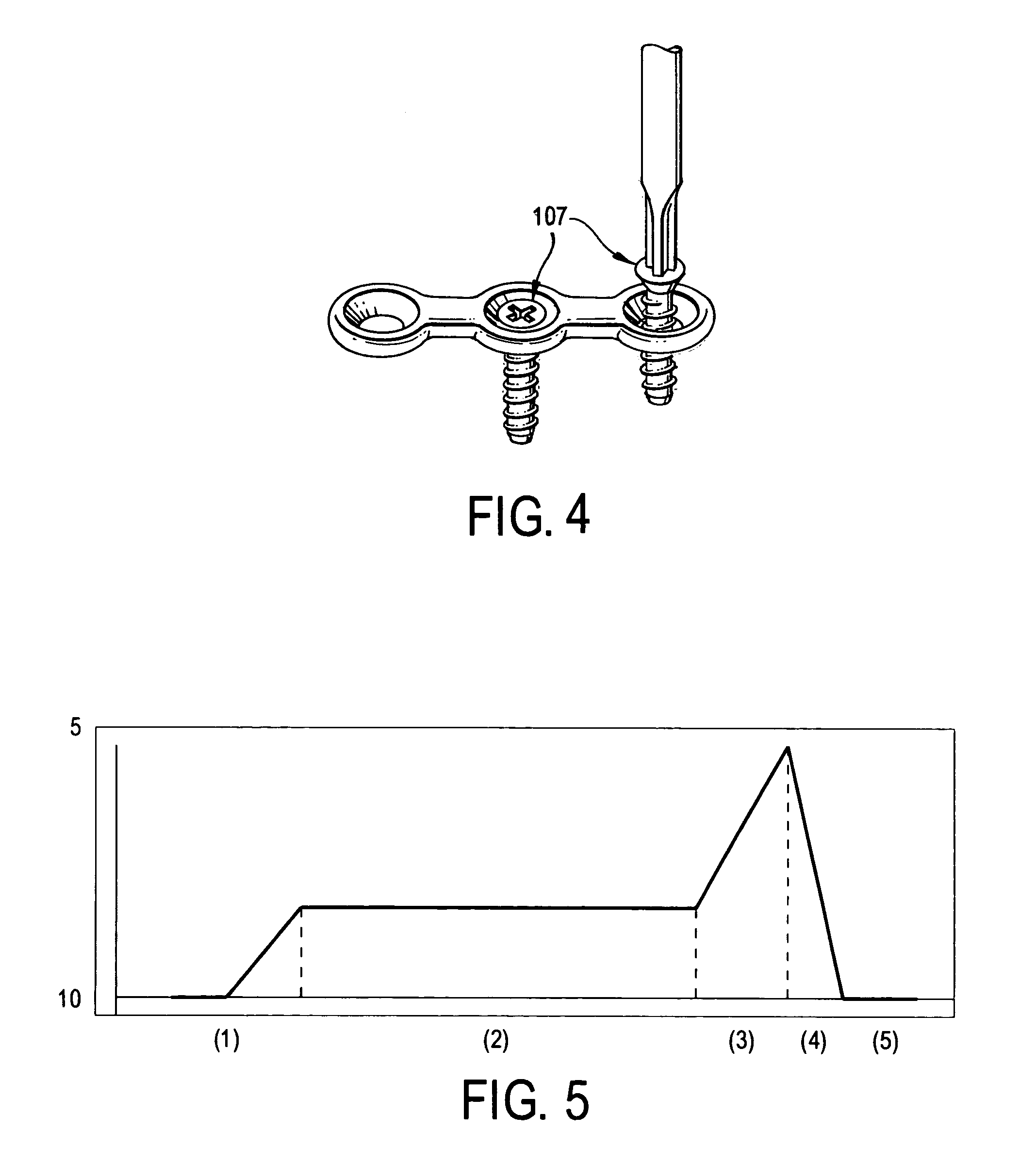Method of monitoring and controlling the seating of screws to the optimum point of grip independent of screw size and material density
a technology of screw seating and screw size, applied in the direction of motor/generator/converter stopper, dynamo-electric converter control, osteosynthesis device, etc., can solve the problems of poor accuracy and repeatability, wear and tear of the clutch over time, etc., to reduce the rate of torque change, eliminate the need for configuration of the tool, and smooth the effect of torque rise and fall
- Summary
- Abstract
- Description
- Claims
- Application Information
AI Technical Summary
Benefits of technology
Problems solved by technology
Method used
Image
Examples
Embodiment Construction
[0014]In the preferred embodiment, the torque is controlled in the following manner, which will be explained with reference to FIG. 5. The seating torque profile shown in FIG. 5 can be divided into the following zones.
[0015]Zone 1: The screw (107) tip makes contact with the material and the required torque level ramps up until the barrel of the screw (107) is reached.
[0016]Zone 2: The barrel of the screw (107), which is of a relatively constant diameter, requires a constant torque to continue driving the screw (107) into the material.
[0017]Zone 3: Once the barrel is seated into the material, the torque required to continue driving the screw (107) rises significantly as the head of the screw (107) comes in contact with the material. The required torque to turn the screw (107) continues to rise until the optimum point of grip is reached, which occurs at the transition point from zone 3 to zone 4.
[0018]Zone 4: In zone 4, the torque required to continue turning the screw (107) drops sig...
PUM
 Login to View More
Login to View More Abstract
Description
Claims
Application Information
 Login to View More
Login to View More - R&D
- Intellectual Property
- Life Sciences
- Materials
- Tech Scout
- Unparalleled Data Quality
- Higher Quality Content
- 60% Fewer Hallucinations
Browse by: Latest US Patents, China's latest patents, Technical Efficacy Thesaurus, Application Domain, Technology Topic, Popular Technical Reports.
© 2025 PatSnap. All rights reserved.Legal|Privacy policy|Modern Slavery Act Transparency Statement|Sitemap|About US| Contact US: help@patsnap.com



